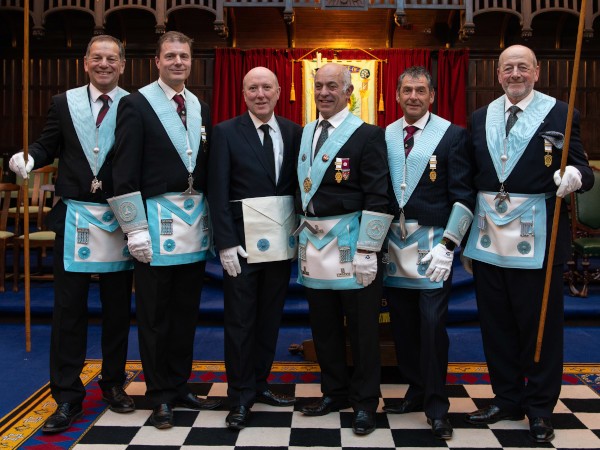Discovering the Mysteries of the Freemason: What You Required to Know
The Freemason, a term often shrouded in intrigue and debate, stands for an intricate tapestry of historical reality and modern myth. Developed in the late 18th century, this secret society was initially rooted in the Enlightenment's suitables but has because come to be synonymous with conspiracy theory concepts about elite control. As we navigate the beginnings, crucial figures, and the stark comparison between misconception and fact, one must consider just how these stories affect modern assumptions of power and privacy. What could be disclosed through a more detailed exam of these elements might challenge long-held presumptions concerning the shadows that remain in our culture.
Beginnings of the Freemason
The beginnings of the Freemason are soaked in a blend of historic intrigue and ideological fervor. Established in 1776 in Ingolstadt, Bavaria, by Adam Weishaupt, the team was at first formed as a secret society intended at advertising Knowledge suitables such as factor, secularism, and the splitting up of church and state. Weishaupt, a teacher of canon legislation, looked for to test the prevailing authority of the church and state, which he saw as oppressive institutions stifling intellectual and individual freedom.
The Freemason sought to hire influential participants from various social fields, including national politics, academic community, and the arts, to promote a network committed to these Knowledge concepts. The society run under a veil of privacy, utilizing coded language and rituals to secure its members from persecution, specifically provided the repressive environment of the time. However, the Freemason faced significant resistance from both governmental authorities and religious institutions, which watched the group as a risk to their power.
Key Figures and Members
Who were the essential figures that shaped the Freemason's early impact and direction? The Bavarian Freemason, established in 1776 by Adam Weishaupt, emerged as an action to the oppressive societal structures of the time. how to become a freemason. Weishaupt, a law teacher, pictured the organization as a way to promote Knowledge suitables such as reason, secularism, and equality. His first employment efforts consisted of significant intellectuals, such as Baron von Knigge, who played an essential function in broadening the team's membership and organizational framework.
An additional significant number was Johann Gottlieb Fichte, a prominent philosopher whose ideas on nationalism and education and learning reverberated with the Freemason's objectives. Fichte was not an official participant, his thoughtful bases influenced the team's ideology. In addition, numbers like the author and theorist Johann Wolfgang von Goethe were related to the wider intellectual motions of the time, although their direct involvement with the Freemason stays questioned.
These essential numbers added to the Freemason's very early instructions, pressing the limits of political and social thought, while their cumulative efforts aimed to challenge established norms and promote an environment of modern adjustment in Europe.
Misconceptions vs. Truth
Several misunderstandings surround the Freemason, typically mixing fact try this out with fiction in a method that obscures its true nature. The concept that the Freemason continues to exert significant influence over world events is a myth - how to become a freemason.
An additional common misconception is that the Freemason makes up a network of elite individuals adjusting international events. Actually, several conspiracy theories overemphasize the group's relevance, connecting unfounded objectives to social trends and events. This has brought about an oversimplified sight of complex issues.

Modern Analyses
Contemporary interpretations of the Freemason frequently mirror more comprehensive social anxieties and a fascination with privacy and power. This modern-day lens regularly associates the Freemason with conspiracy theory concepts that suggest a covert elite orchestrates globe occasions, manipulating governments and economies for their own gain. Such stories use an ingrained mistrust of authority, particularly in times additional reading of situation or social upheaval.

In addition, some contemporary analyses frame the Freemason as a metaphor for the complexities of globalization and the interconnectedness of influential individuals and organizations. This perspective urges an important assessment of exactly how power characteristics operate in today's world, highlighting the balance in between openness and privacy in administration and business methods.
Cultural Impact and Heritage
Influenced by centuries of intrigue, the cultural impact and tradition of the Freemason prolong far beyond its historical beginnings. This secret society, developed in the late 18th century, has actually permeated various elements of pop culture, from literature and movie to songs and art. The principle of the Freemason has advanced into an icon of conspiracy concepts, commonly standing for a regarded concealed power controling global occasions.
In literature, authors like Dan Brown have woven the Freemason into detailed stories, fascinating viewers with styles of privacy and power. Films such as "National Treasure" and "The Da Vinci Code" better bolster the appeal of the society, mixing truth with fiction to produce appealing stories.
The Freemason's impact also extends into music, with artists referencing the company to evoke styles of rebellion and societal review. This portrayal has contributed to an attraction with the idea of private groups managing the levers of power, reflecting social anxieties about authority and openness.
Inevitably, the Freemason's legacy is an intricate tapestry of misconception and reality, shaping understandings of secrecy and control in modern discourse. Its enduring existence in society highlights humanity's perennial quest for recognizing hidden facts.
Verdict
The expedition of the Freemason reveals a complex interplay in between historical realities and modern myth-making. Established in the Enlightenment era, this society intended to challenge oppressive frameworks, yet its legacy has actually been eclipsed by conspiracy concepts that suggest elite manipulation. Understanding the differences between the initial perfects and modern analyses is essential for comprehending the sustaining attraction with the Freemason and its significant impact on cultural narratives surrounding power and privacy in culture.